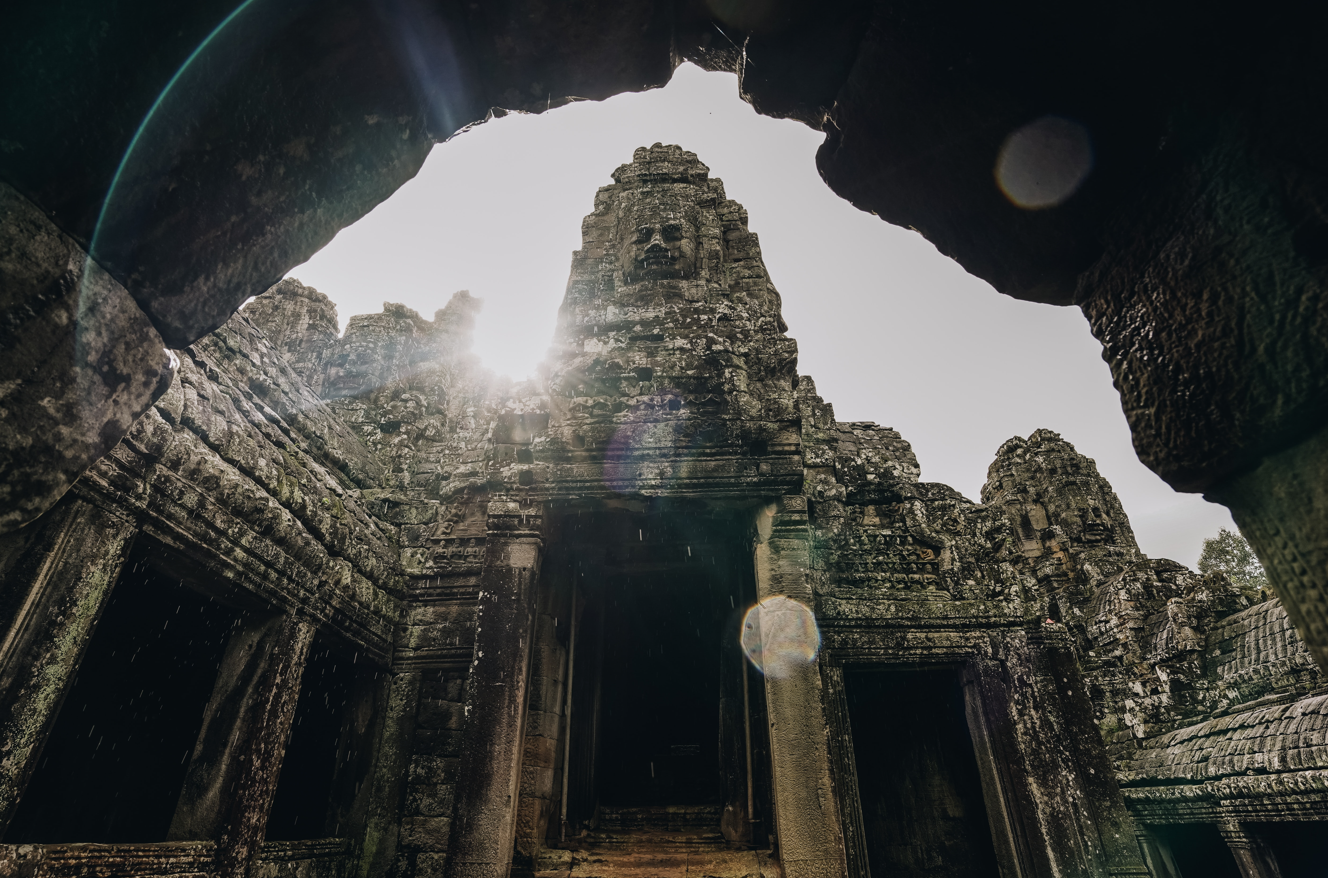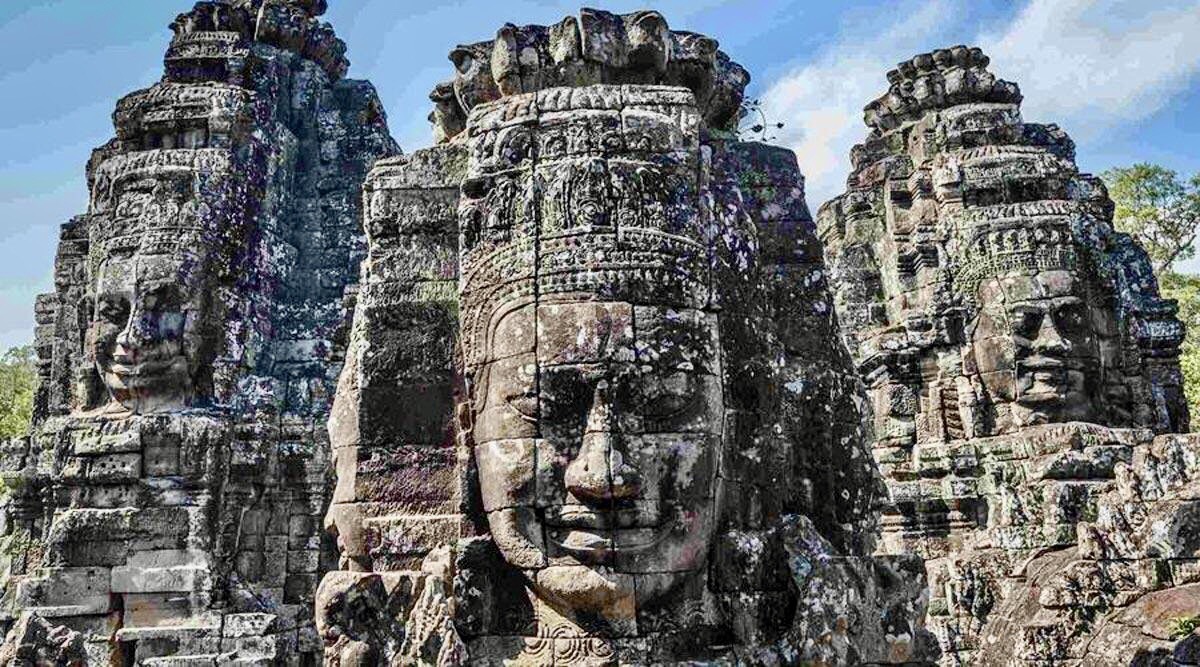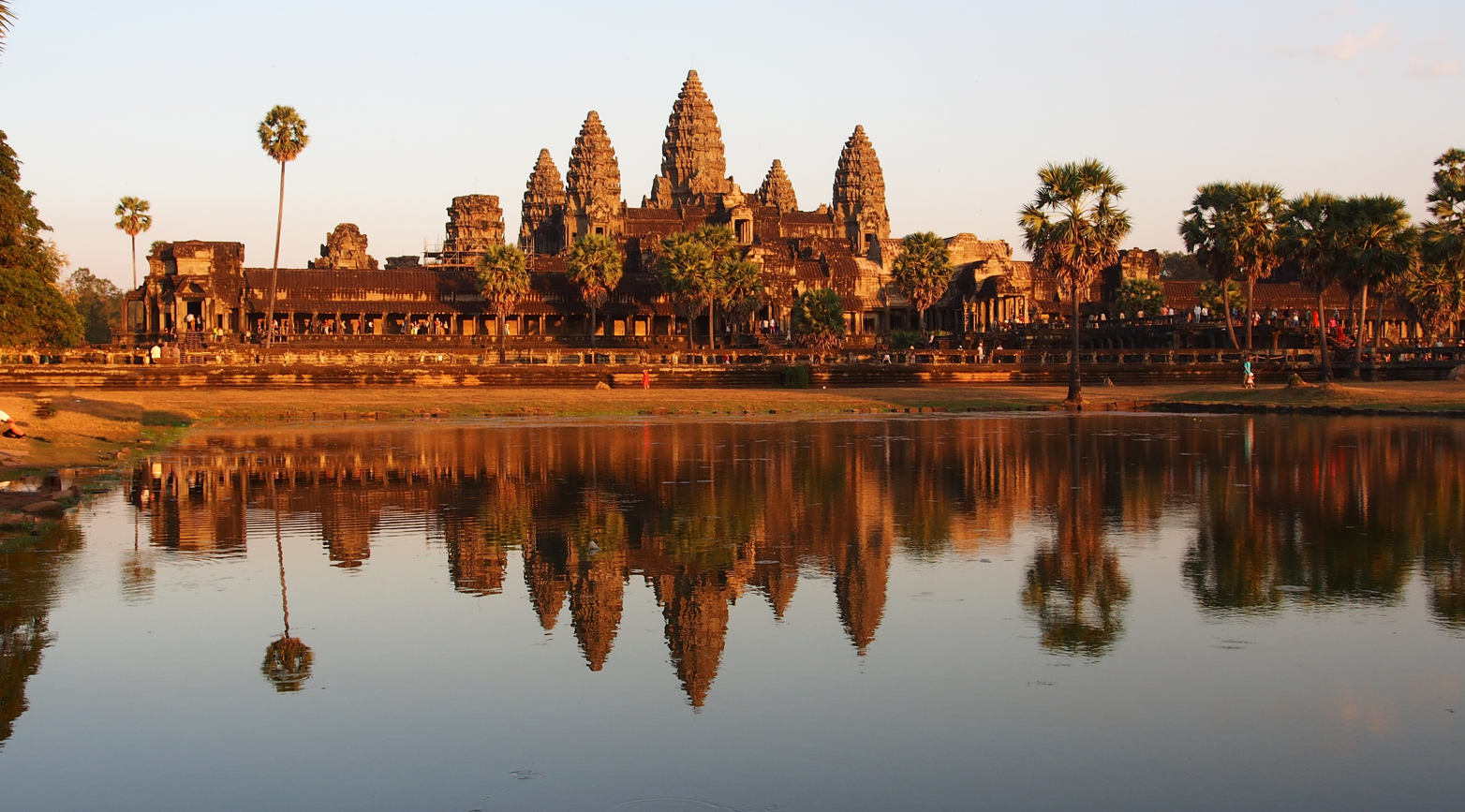The Angkor temple complex in Cambodia stands as a marvel of the world, drawing tourists from far and wide.
Situated just 6 km north of Siem Reap, this architectural wonder was constructed by King Suryavarman II in the 12th century. Spanning an impressive 248 square miles (400 km2), the complex is encircled by a deep moat, originally built for Hindu worship but later transformed into a center for Buddhism.
Designated as a World Cultural Heritage site by UNESCO in 1992, the Angkor temple complex boasts over 1,000 temples showcasing the Khmer architectural style. Among these, Angkor Wat, Angkor Thom, and Bayon temple are renowned for their intricate sculptural details. Influenced by ancient Khmer art, the complex exudes a unique architectural charm, reflecting the rich cultural heritage of the region.
The architectural grandeur of Angkor is a testament to Khmer artistic prowess, with its stone structures and elaborate carvings depicting scenes from the epics Ramayana and Mahabharata. The meticulous craftsmanship is evident in the intricate stone motifs of Buddha statues, dancers, warriors, and lotus images adorning the temples, creating a vivid and captivating experience for visitors.
The temple’s architecture, inspired by India’s Mount Meru, features a central tower reaching 65m high, symbolizing the legendary mountain, with five surrounding towers mirroring its five peaks. Constructed entirely from sandstone and honeycomb stone, the temple showcases impressive craftsmanship, with massive stone blocks intricately stacked without the use of adhesive or reinforced concrete.
In addition to its architectural marvels, Angkor boasts an elaborate irrigation system developed over multiple dynasties. The region’s irrigation infrastructure revolves around expansive reservoirs, essential not only for sustaining local communities but also for fostering economic growth within the capital, Angkor.
Below are 5 mysterious temples in the Angkor Monuments Complex:
Angkor Wat
Angkor Wat Temple, renowned for its 5 towering structures, stands as a masterpiece of architecture within the vast complex.
The temple’s grandeur is evident as its primary entrance aligns westward, symbolically facing the setting sun. Featuring an impressive 398 rooms connected by 1,500m of corridors, the temple’s focal point is the interconnected 5 towers spanning 3 architectural levels. Among them, the tallest tower reaches a soaring height of 65m, while the 4 accompanying sub-towers stand at 40m each. The path leading to Angkor Wat’s main gate is a striking sight, crafted from boulders and stretching 230m in length, nearly 10m wide, and elevated 5m above the surrounding lake waters.
Exploring the temple complex reveals a treasure trove of ancient artistry, showcasing intricate stone carvings adorning various elements like relief panels, columns, doors, ceilings, walls, and railings. These remarkable depictions reflect the remarkable craftsmanship and ingenuity of the ancient Khmer civilization, preserving their legacy through the ages.

Angkor Thom
Angkor Thom, the formidable capital of the ancient Khmer empire, boasts remarkable temples and architectural marvels. The site includes renowned structures like the Bayon Temple, Baphuon Temple, Phnom Bakheng Temple situated atop a hill, Elephant Terrace, Terrace of the Leper King, and five grand gates welcoming visitors into Angkor Thom.
Notably, the Bayon Temple stands out as a pinnacle of architectural splendor, leaving visitors awestruck with its exquisite and vibrant beauty. Comprising 50 stone towers, the temple features a terraced design with 16 medium-sized stupas and numerous interconnected small towers, creating a captivating ensemble of ancient craftsmanship.
Roluos group
Discover the historical significance of the Rolous group, a collection of distinctive ruins from the ancient city of Hariharalaya. Predating Angkor, these ruins showcase the rich heritage of the region, with the Bakong temple standing out for its remarkable pyramid architecture.
Peripheral temples
Located a distance away from the heart of the Angkor Wat temple complex, the peripheral temples offer a distinct and remarkable experience. Among these, the Banteay Srei Temple stands out for its unique features. Constructed predominantly using red sandstone, the temple showcases intricate wall sculptures adorned with vivid pigments, a testament to the exquisite craftsmanship of the past that still captivates visitors today.

